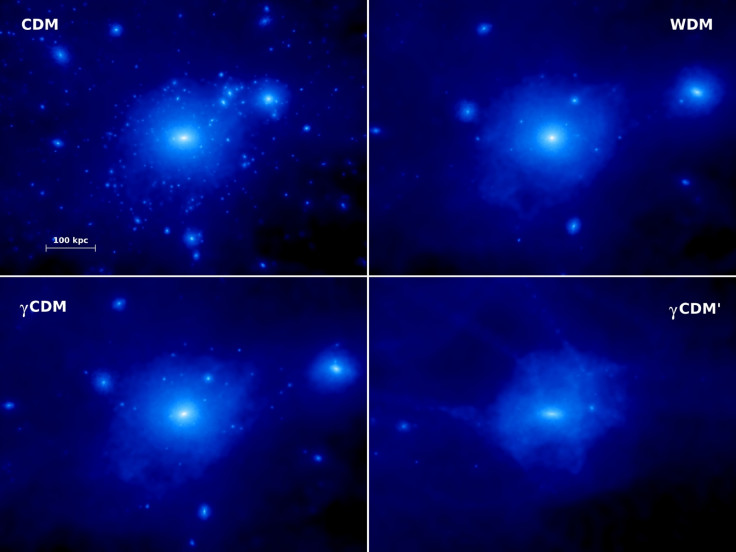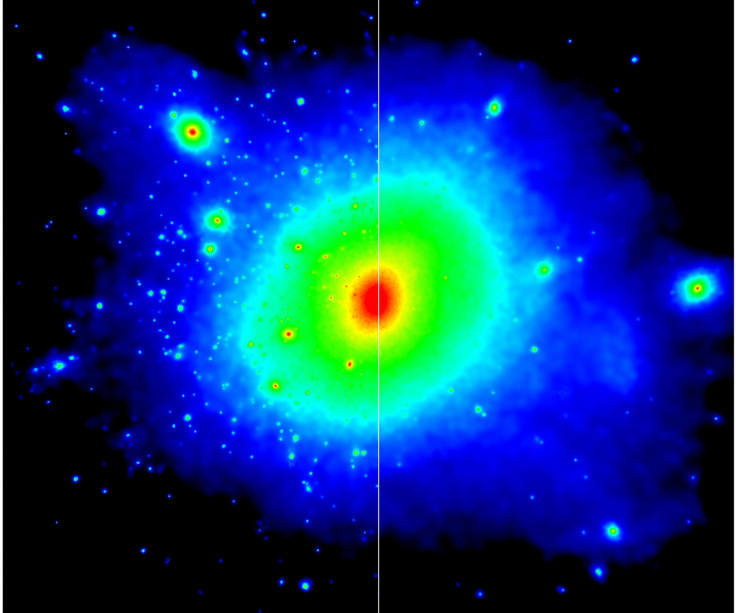Missing Galaxies Explained by Dark Matter Interactions in Early Universe

To tally the number of galaxies around the Millky Way, physicists are proposing a change in character of the invisible dark matter.
They are suggesting that these particles may have interacted with photons and neutrinos in the early universe and got scattered in the process.
A scattered dark matter population seems to fit with telescope observations of galaxies.
Galaxies in our universe are rotating at such speeds not explained by visible mass. Under the action of these speeds, they should have spun away much of their material, unless something invisible was holding the mass together and providing a strong gravitational force. Enter dark matter.
Scientists think that dark matter particles were among those created in the big bang that have persisted 14 billion years hence, thanks to their stability. Dark matter interacts with light and matter only through gravity. A certain clumpiness to dark matter particles, wherein they trap gas and dust required for star formation, is what kick-started galaxy formation.
Computer simulations of the formation of our galaxy have suggested that there should be many more small galaxies around the Milky Way than observed through telescopes. This has cast doubts on the generally accepted theory of 'cold' dark matter that predicts more galaxies in our vicinity.

Now cosmologists and particle physicists at the Institute for Computational Cosmology and the Institute for Particle Physics Phenomenology, at Durham University, working with colleagues at LAPTh College & University in France, are suggesting that the dark particles are not that 'cold' after all.
Writing in the journal Monthly Notices of the Royal Astronomical Society, they say that dark matter particles could have interacted with photons and neutrinos in the young Universe, causing the dark matter to scatter. Once scattered their ability to trigger galaxy formation is naturally reduced.
As there is no idea how strong these interactions are, the team ran simulations to see the best fit to the observed universe. By tuning the strength of scattering of particles, they could check for different scenarios.
The calculations were carried out using the COSMA supercomputer at Durham University, which is part of the UK-wide DiRAC super-computing framework.
© Copyright IBTimes 2025. All rights reserved.





















